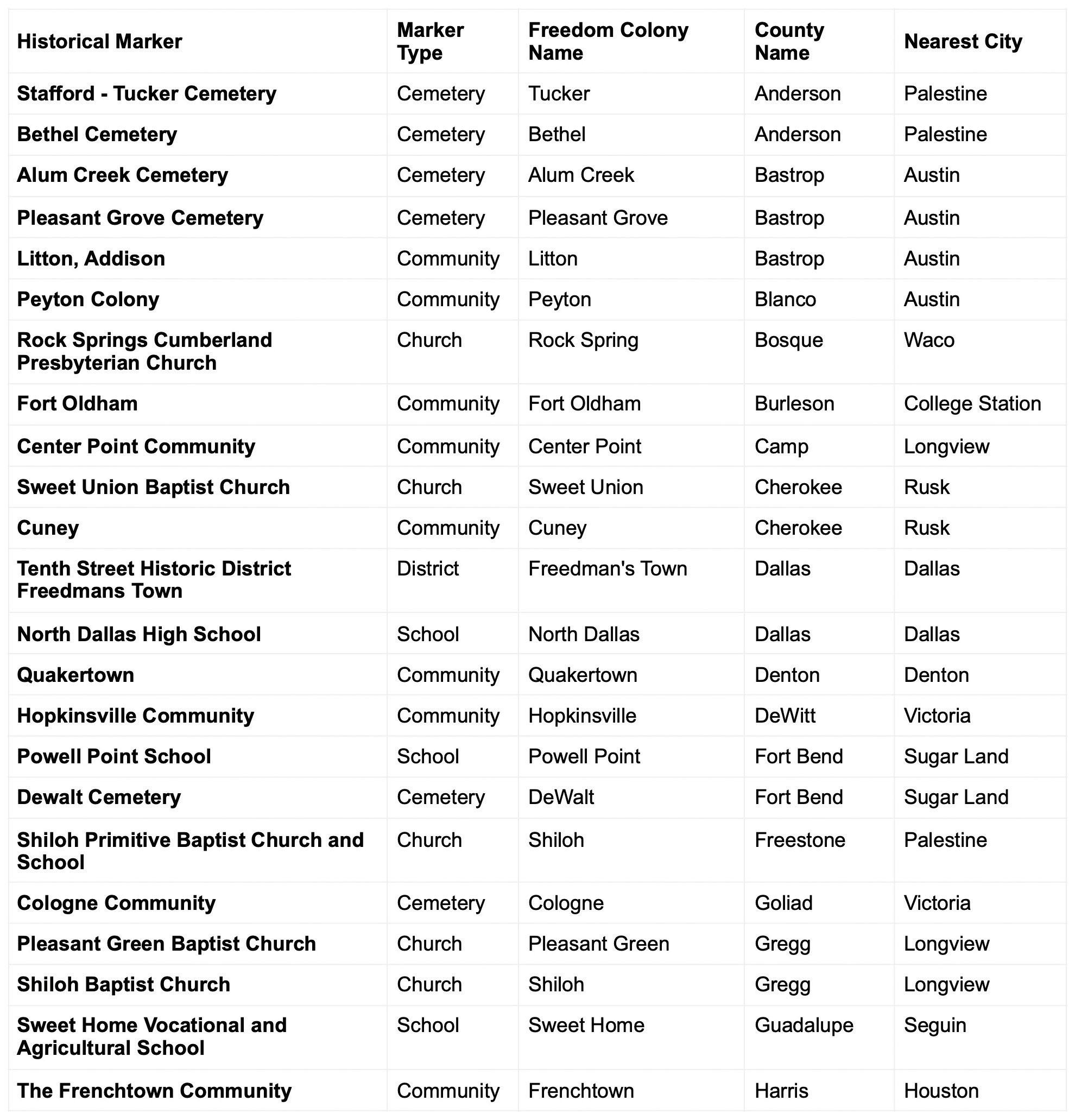
2 minute read
Official Texas Historical Markers
Markers help to recognize Freedom Colonies and their Landscapes. State historical markers provide legitimacy to places of local and state historic significance. Markers also often mean that preservation efforts are more successful because they give assurance to grant funders, officials, and the general public that the area is documented, has historical significance, and has the support of a local, grassroots community. There are hundreds of markers throughout the state recognizing African American heritage. However, the markers listed below are only those associated with or located within a Freedom Colony, and directly related to that community’s heritage.
The distribution of the 67 markers includes 26 recognizing communities (or Freedom Colonies), 17 markers for churches, 17 for cemeteries related to Freedom Colony heritage, six (6) designating schools, and one (1) honoring a historic district.
Advertisement
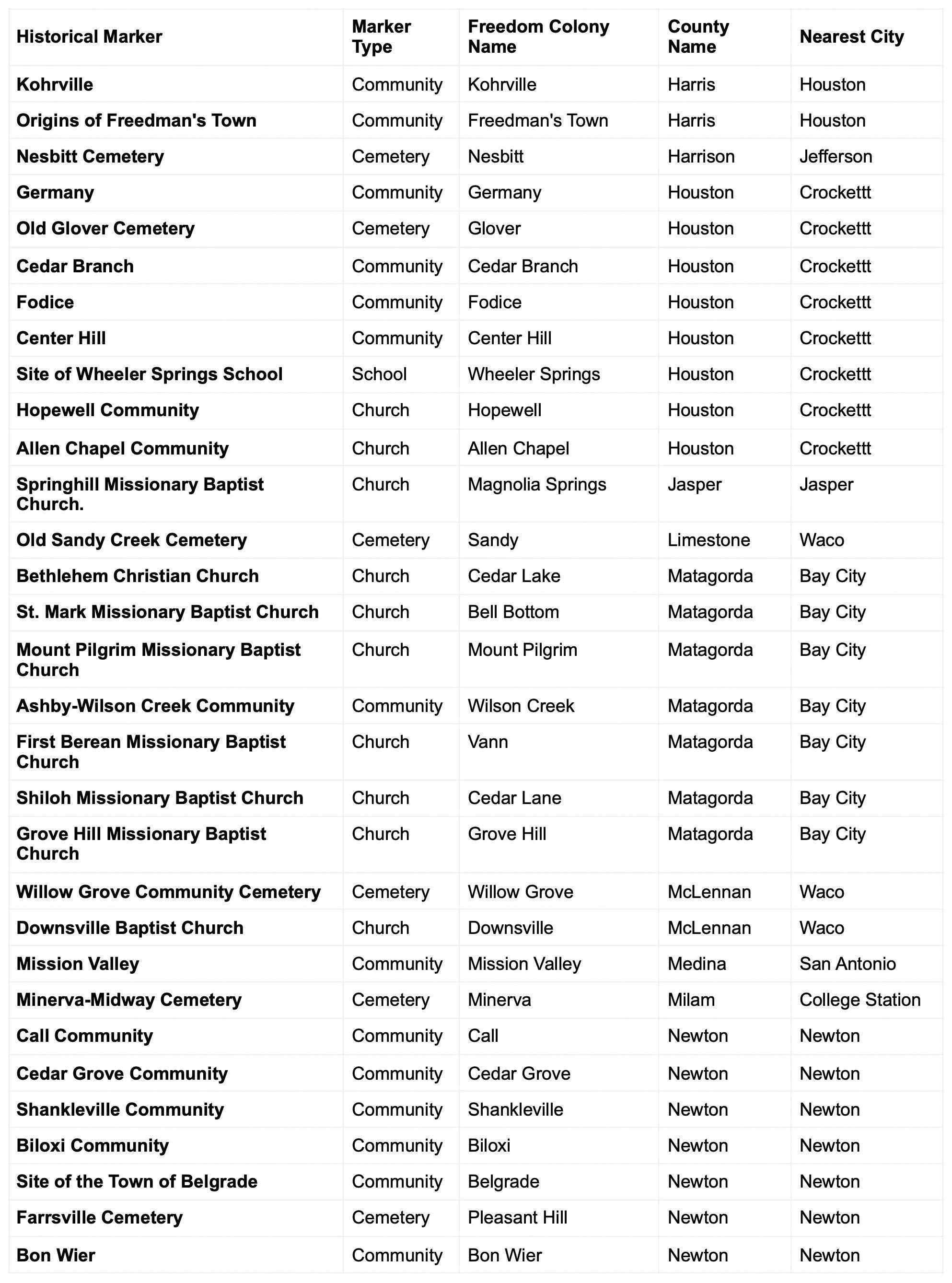
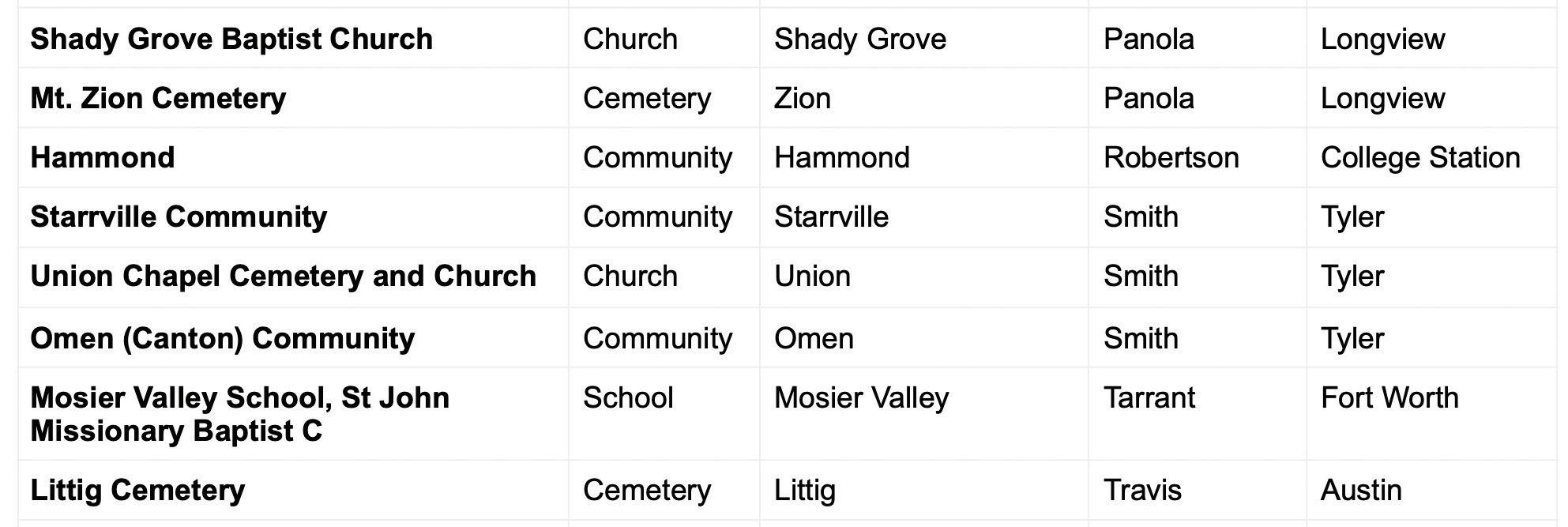
Part 3: Preservation and Interpretation
Site Interpretation
Site interpretation is a tool to get visitors involved in the activities or engage in the learning experience of the place they are exploring. Site interpretation needs to be easy to understand and easily accessible to the visitor. It should be informative and connect visitors to the place. Site interpretation should be aim to be authentic and to inform in ways that impact the visitors and leave long lasting appreciation for the site.
Site Interpretation Case Studies
The following case studies represent varied approaches to site or district interpretation and preservation of Freedom Colonies. The three examples are associated with the 1867 Settlement near Texas City, the Shankleville community in Newton County, and Freedmen’s Town Historic District in Houston,
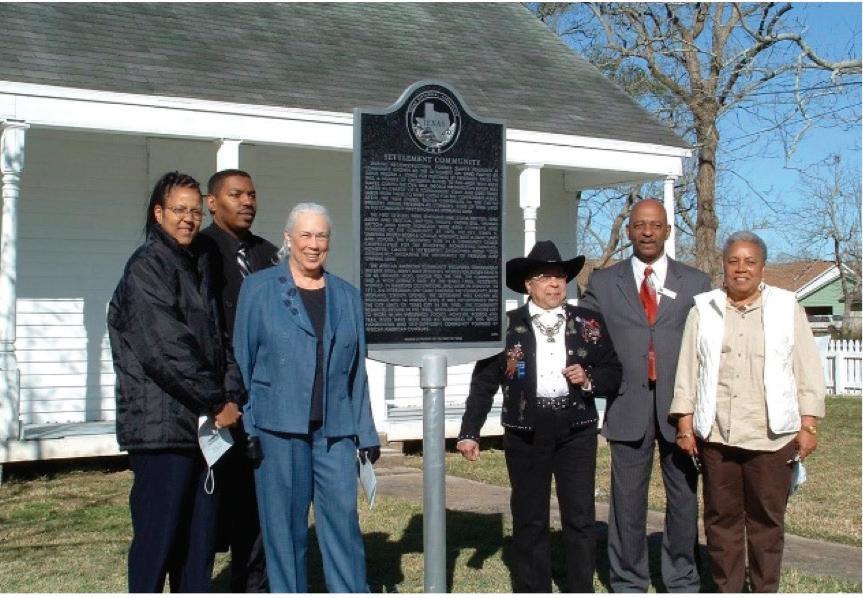
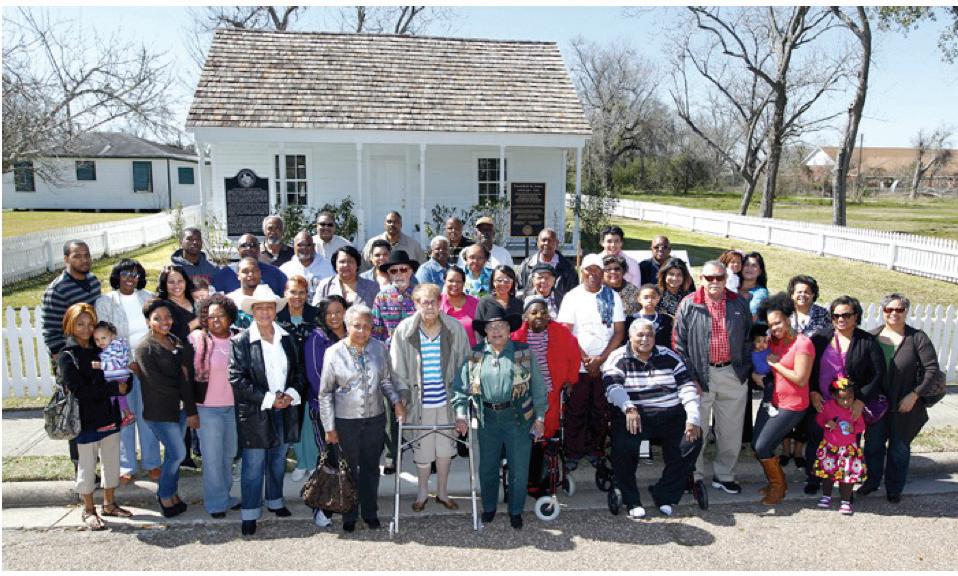

The 1867 Settlement Historic District
In the 1867 Settlement Historic District in Texas City, descendants who own property give trail ride tours through the district. Interpretive kiosks have been created and are spread throughout the community for visitors to learn more.
Shankleville Purple Hull Pea Festival
The Shankleville Freedom Colony in Newton County hosts an annual “Texas Purple Hull Pea Festival” at the historic A.T. and Addie Odom Homestead. The festival celebrates the cultural traditions in agriculture and food related to the Southeast Texas region, and more specifically the Shankleville community. This type of program provides a great opportunity for visitors to learn about the Freedom Colony’s history and legacy, and to raise funds for ongoing preservation and stewardship initiatives.
Freedmen’s Town Historic District
Freedmen’s Town Historic District is located in the Fourth Ward in Houston. The African American Library, located at the Fourth Ward’s Gregory Lincoln School, is used to teach visitors about the history of the area. Though gentrification and the decline of historic buildings have greatly compromised the architectural integrity of the area, the Gregory Lincoln School’s exhibits provide a space in which archival materials associated with local heritage can be displayed and preserved.
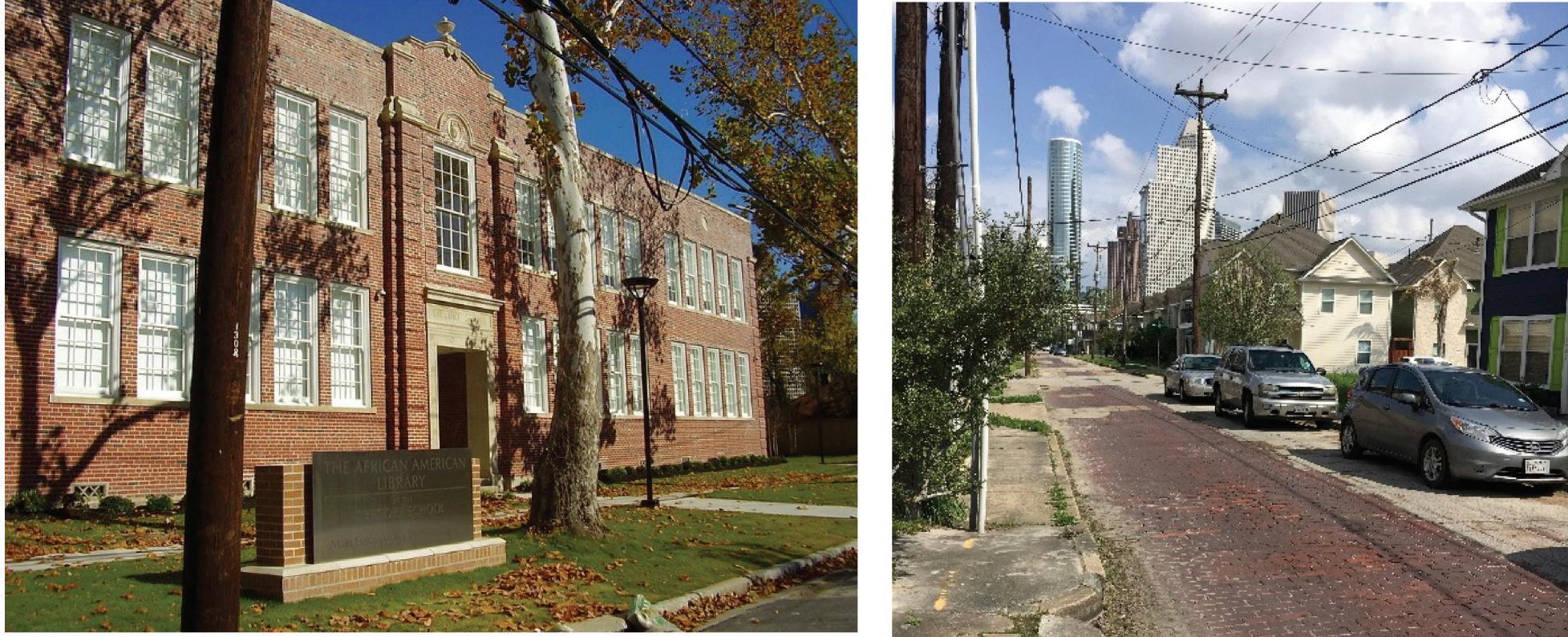
Reading List
Sitton, T., & Conrad, J. H. (2005). Freedom Colonies: independent Black Texans in the time of Jim Crow. Austin: University of Texas Press.
Roberts, A., & Biazar, M. J. (2019). Black Placemaking in Texas: Sonic and Social Histories of Newton and Jasper County Freedom Colonies. Current Research in Digital History, 2, 5–6. doi: 10.31835/crdh.2019.06
Roberts, Andrea. (2017). Documenting and Preserving Texas Freedom Colonies. Texas Heritage Magazine. 2. 14.
Smith, G. (2020, February 1). Discovering My Roots Down Home. The Bullock Texas State History Museum. https://www.thestoryoftexas.com/discover/texas-story-project/down-home
Barr, A. (1996). Black Texans: A History of African Americans in Texas, 1528-1995. University of Oklahoma Press.
Mears, M. M. (2009). And Grace Will Lead Me Home: African American Freedmen Communities of Austin, Texas, 1865-1928. Texas Tech University Press.



